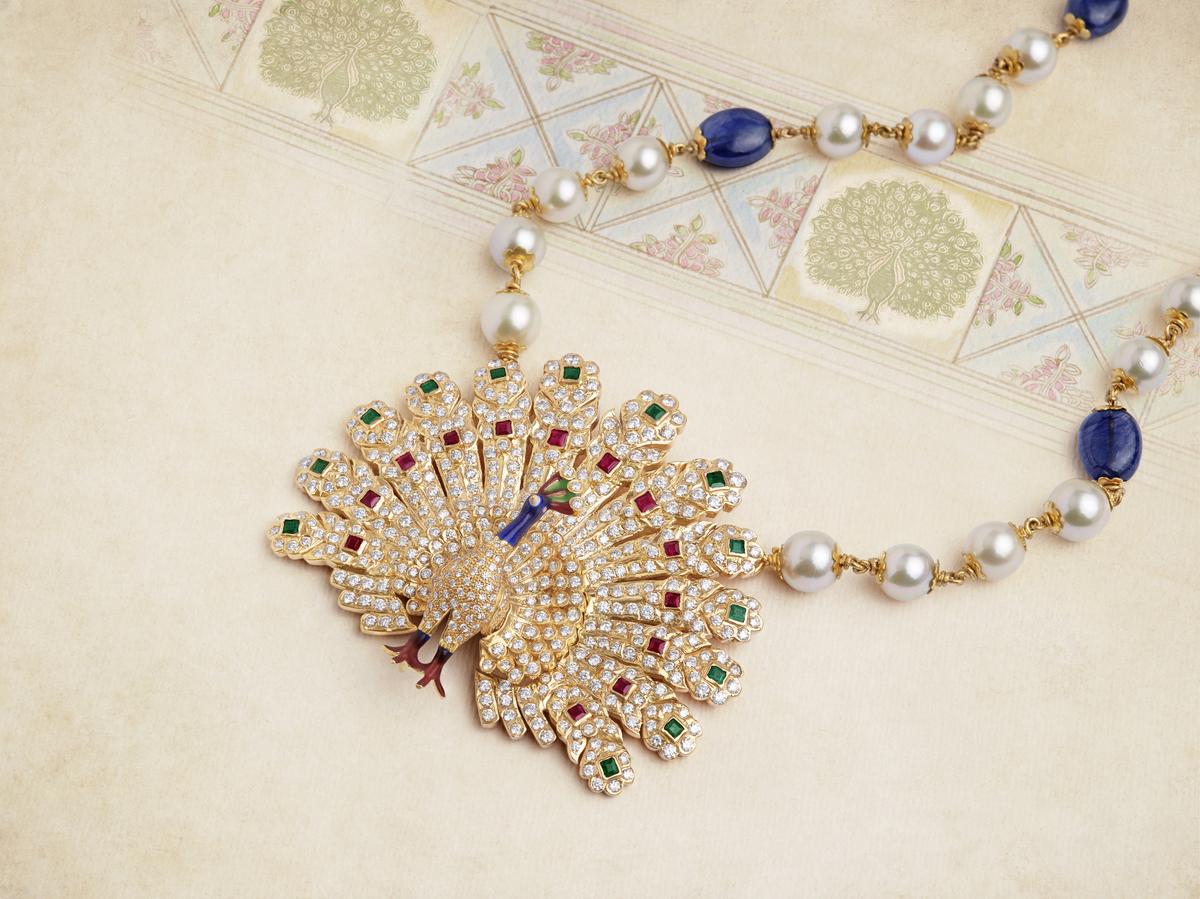Inside Pettagam, India’s first private museum for Chettinad jewellery
In every Chettiar household sits a pettagam, a large, traditional iron chest or strongbox that stores the family’s valuables. More importantly though, it holds the jewellery passed down through several generations. These iron chests come with complex lock combinations and, in some households, have remained unopened for years, as newer generations are yet to find a way to bypass the mechanics.
A cheery, bright yellow building with green windows tucked away in Karaikudi, however, promises a deep dive into the rich and layered history of the jewellery of the region. This is Pettagam, India’s first private museum for Chettinad jewellery, conceived by jewellery designer Meenu Subbiah.
Among the earliest graduates from South India at the Gemological Institute of America, Meenu has been working on traditional Chettinad jewellery and exploring contemporary designs through her brand, Meenu Subbiah Jewellery, which she founded with her father in 1993.
Meenu Subbiah
| Photo Credit:
Special Arrangement
“Chettinad, much like its mansions, cuisine, and textiles, has beautiful jewellery, created with deep meaning. Every motif you see has a purpose and history. However, this fascinating legacy has not been documented well enough,” says Meenu. This led her to embark on nearly 20 years of research, as she sought to delve deeper into the Natukottai Nagarathar community and their history with trade, precious gems, and jewellery. “I travelled across the country, and to Singapore, Malaysia, Sri Lanka, and several other places to speak to members of the community, historians, and anyone else who could share some insight and nuance,” says Meenu.
In Karaikudi, we step into the culmination of her travels and research at Pettagam, where the first floor is dedicated to tracing the history of the Nagarathar community that Meenu belongs to. She points out that the Silappadhikaram, the Tamil epic, documents the Nagarathars as traders of rubies, emeralds, sapphires, and pearls as early as the 2nd Century.
A display at the museum
| Photo Credit:
Special Arrangement
Through jewellery unique to the community — such as the kazhuthuru, an ornament given to a Nagarathar bride during marriage, and the gowrishankaram, considered to be the most important ornament worn by men during events and ceremonies including weddings — we learn about the rare and dwindling art of the close-setting technique. This technique, used in less than 10% of traditional jewellery, securely encases diamonds or other precious gems from the sides and back, in the precious metal used to make the piece.
“This is a rather complex and time-consuming art, and we unfortunately have a dwindling number of artisans who still practise it. Through Pettagam, we were keen on reviving this dying art. Pieces made with this technique are sturdy and come with so much nostalgia; they are pieces of the heart, and no machine can make this kind of jewellery,” Meenu says. At Pettagam, a separate display showcases the tools used in crafting jewellery through the close-setting technique.
Another facet she highlights are the unique motifs — from crabs and peacocks, to bows, laces, and conches that recur in Nagarathar jewellery. “Nagarathars who travelled were said to follow the crab routes, which is why it finds a place of prominence in many pieces, including our thirumangalyam (marriage ornament). Bows and laces are believed to have originated from visits to the royal family in England,” she says.
While the ground floor also has an AV room playing a film that takes visitors through the prominence of jewellery in Nagarathar culture, the first floor is a dedicated space for jewellery showcases. “Apart from heirloom pieces my family owns, I hope to have a rotating display of exquisite traditional pieces sourced from different families in this region. Alongside this will be a showcase of jewellery from my brands as well, which will also be available for purchase,” Meenu says.

Mayil Maguri
| Photo Credit:
Special Arrangement
Her newly launched brand, Vilasam, which specialises in traditional Chettinad jewellery will have a place of prominence at the museum, also highlighting the close-setting technique. Contemporary jewellery from her Menaya brand, and jewellery specific to different parts of the country, including guttapusalu from Andhra Pradesh and kaasu maalai from Kerala, adapted as part of the Vamsam range, will also be showcased.
Pettagam now joins the ranks of private jewellery museums across the country, like the Amrapali Museum in Jaipur, which spotlights unique craftsmanship and techniques while documenting jewellery legacies. Meenu adds, “Every region in our country has a beautiful ancestral legacy in jewellery, and these legacies deserve to be protected and preserved. This museum is an important archive of Chettinad and its jewellery, while also underscoring the importance of preserving traditional jewellery-making techniques.”
Pettagam is at SRM Street, Karaikudi, and opens for visitors from October 1. Guests can visit by making an appointment via email at concierge@meenusubbiah.luxe or by phone at 9566503736. Entry is free.
Published – September 22, 2025 04:35 pm IST


